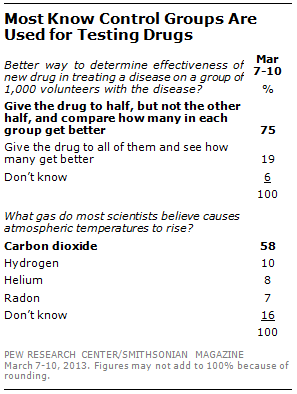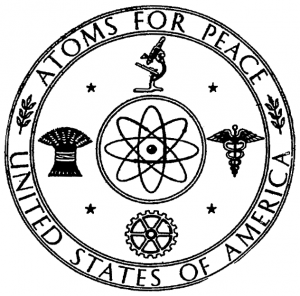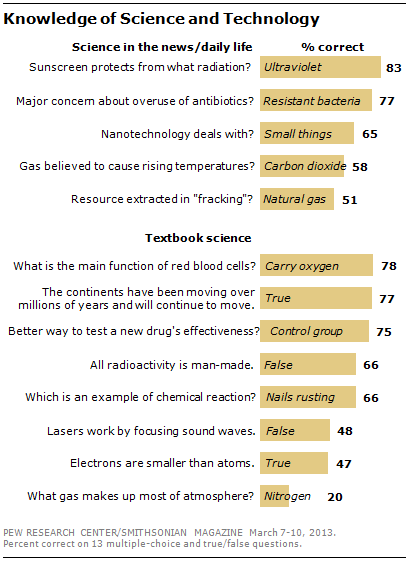A Message for Entrepreneurs: ‘Don’t Hesitate to Start’
Roni Einav is one of Israel’s most successful software entrepreneurs. In 1983, he founded Fourth Dimension Software, later renamed New Dimension Software. He served as its CEO and chairman until the firm was sold in 1999 to Texas-based BMC Software for $675 million. Currently, he heads Einav High Tech Assets, which invests in high-tech start-ups. Einav is also co-author with Miriam Yahil-Wax of the memoir, Nordau to NASDAQ — The Evolution of an Israeli High-Tech Start-Up, which describes his entrepreneurial journey.
Einav believes that entrepreneurs need to balance their instincts and education, and to not be afraid of making mistakes. In a conversation with Knowledge@Wharton, he says: “I tell people that if they are looking for the perfect idea, for the perfect gap in technology, they will never get there.”
An edited transcript of the conversation follows.
Knowledge@Wharton: Your book is titled Nordau to NASDAQ. What does the title mean?
Roni Einav: The title has a few [different] meanings. One of them is that I was living for many years in a place in Tel Aviv called Nordau Boulevard and my destination was a global target like Wall Street or NASDAQ. There is also a socialistic flavor because [World Zionist Organization co-founder Max] Nordau was next to [Theodor] Herzl in the Zionist part of the movement. The movement was pretty socialistic. And then we came to the climax of capitalism. Also Miriam, my co-author, thought that it should be a little mysterious.
Knowledge@Wharton: You studied at Technion, which is one of Israel’s most prestigious technical universities. And then you spent some time with the Israeli defense forces. How did these experiences shape you as an entrepreneur?
Einav: I think I was lucky to be educated in Technion, which has got a few Nobel Prizes. After being educated as an engineer, I served my country in the Army. But I wasn’t an officer in the military operations; I was in operations research, in the systems analysis of ammunition and our military systems. From age 22, I got the chance to operate in the big [league]. You fight for [your] opinions with the senior officers. And even though they are 40-45 years old and enjoy a great deal of prestige for what they’ve done in the Army, you come out with your own thinking. You are not afraid to fight for your opinions, to be stubborn … to think of what is the best for Israel and for the Israeli Army.
I think it’s a kind of a complementary education. After four or five years, you are more experienced in the practical side of the academia and not just in the academia itself.
Knowledge@Wharton: From there, how did you enter the world of business?
Einav: I never worked for anybody. I started in the computer business, but at that time it was more professional services. Our clients were the ministry of defense, the Army, some of the big Israeli ventures. There are not too many big organizations in Israel — just five or 10. After a while I realized that if you want to play globally you need to have some [intellectual] property, a software product or something that can be sold in other parts of the world.
Knowledge@Wharton: One of your first notable forays in business was in Iran, which was under the reign of the Shah at the time. Could you tell us about that experience?
Einav: At that time, the relations between Israel and Iran were very close. Israel and Iran and Turkey were the power against the Arab world. The Shah wanted to have a powerful Iran, a good education system and so on. He came to us as architects and engineers to help him build the civilian part of the Navy — the Iranian Navy. We built new cities in Bandar Abbas, Bandar Bushehr and Kharg Island.
Today, Bandar Bushehr, for example, is known for the nuclear plant. Sometimes Iranian boats travel from Bandar Abbas to Lebanon with missiles. But at that time, we were engineers and the thinking was that people from Israel can do a professional job relatively fast. The places I have mentioned are very remote and have an extremely bad climate …. So, it was interesting. After working with the Shah, we also worked with the Pahlavi Foundation in Tehran. And we felt very good.
Knowledge@Wharton: The other episode from the early years I found interesting was that following Israel’s peace agreement with Egypt in 1979, the Sinai Peninsula evacuation contributed to the growth of your company, which you named “Einav Systems.” How did that happen and what was the impact on the company’s growth?
Einav: That was my first big contract. We had a team of 10 or 12 people. The Army at the time understood that in order to ensure that a project of so many billions was effectively implemented, they must use civilian resources. I was lucky to work for them and maybe they were lucky to hire me because the job was intelligent, fascinating, but at the same time it required a lot of effort and a lot of talent. As a result of my success in the job, I got additional contracts, which were more related to software for big civilian projects.
Knowledge@Wharton: How was Fourth Dimension Software formed and how did it grow out of Einav Systems?
EIt was owned 50% by somebody who worked for Einav Systems and 50% by partners related to Einav Systems. This was a very typical way, a socialist way, of setting up a new business with no external funding. After a couple of initial failures, we got an opportunity from the Israel Air Force. They had software that they used for scheduling the routine daily life of the Israeli Air Force. But while the software was important, there was no documentation, nobody built it as a package. There was a [lot] of improvisation. The Army and we came to an agreement that we would take the software and develop it into something that could last for many years. The benefit for the Army was that they would get it for free for many years and the advantage for us was that we got an opportunity to do something very big.
Knowledge@Wharton: How did you overcome the initial challenges in developing database software?
Einav: As we started with the scheduling package, we were naïve enough to think that we could make a better database as well. If you are young and ambitious, you are not afraid to fight IBM or Computer Associates and smaller organizations. Maybe I can say … that in being too educated maybe you’re becoming too disciplined and too organized. It’s good to be organized but it’s also good to dream a little and be a little naïve …. You need to balance your instincts and your education.
Knowledge@Wharton: Intuition and imagination play as big a role in entrepreneurship as discipline and hard work.
Einav: I think so. We never dreamt that Fourth Dimension Software would have so many products, that it would be so profitable. So, the range of your dream is one year, maybe two years. And the dream is a dynamic one. After one year, you have a different dream.
You spend a lot of time in your book talking about the importance of human capital. One way of achieving your dreams is to attract and develop the best people. Could you explain how you did that in your company?
Einav: At that time, it was relatively easy because in Israel there were not so many [success] stories like Fourth Dimension Software. All the stories about Israel and the few thousand start-ups are the result of my story and stories like that. At that time, if you wanted to sell software abroad, you just had five or 10 or 15 possibilities. Once we started to succeed — you have to be successful in order to attract human capital — we had the right friends in the Army. Among the new immigrants, we found the right people to work for us.
Knowledge@Wharton: What was Control M?
Einav: Control M was our first enterprise software product. Across the world, there are maybe 15,000 or 20,000 organizations like banks, airlines, insurance companies and military organizations that have [multiple] activities. Let’s take, for example, a bank. A bank has mortgages and foreign currency and you can get cash from ATM machines. But at least once every day or maybe once every hour, depending on its size, the bank wants to streamline all its activities. We built a software robot that could do this. Later, we developed complementary technology.
Knowledge@Wharton: How did the company enter and expand in the U.S. and then in Europe? And what lessons did you learn from those experiences?
Einav: At that time we were dreamers but not crazy. We understood that we didn’t have money to build our sales force. So, Boole & Babbage Europe (B&BE) sold us in Western Europe. In America, we got another distributor. This distributor, operating from California, worked for us for five years but there were problems. In 1991, we entered into an agreement to hire most of his people who were related to our technology in their offices in six different locations. We were rich enough to make this move. It was a critical move because a year-and-a-half later we had our IPO in NASDAQ. Before that we needed to prove that we were a strong force. And as a global player, you need to be on your own in the U.S.
Knowledge@Wharton: What are the factors that led to the company going public? What obstacles did you encounter and how did you deal with them?
Einav: We were successful before going public. And we gained experience during our journey. While we did not know what it meant to be public, we felt that all our competitors were on NASDAQ and, if you want to be a global player, you need to follow the game. At that time, the value of the company was $120 million. Two percent of the company was owned by EDS. We felt that [an IPO] was the right move. After one year, the value of the company doubled. It was around $250 million. After one more year, it was $35 million. So, there were also troubles and once you are public, everyone knows when you are in trouble.
Knowledge@Wharton: Following the IPO, Fourth Dimension experienced extraordinary growth. In less than three years the company grew six fold. What drove this growth and what challenges did that create?
Einav: We learned how to be public for the good and bad parts. It was good at the beginning, maybe too good. We thought that it’s a multiplication game — that if we double the workforce, we would double the revenue. It didn’t work. We needed to rebuild the company from scratch. But, luckily, we had the money to fail for a year. With no money in the bank, it may have been impossible to rebuild the company.
Knowledge@Wharton: What led to that sharp fall in business? Also, I believe there was the filing of a class action law suit. How did you deal with that challenge?
Einav: It happened all together. We were not ready for the fact that our revenue was not growing as we had planned. The [problem] was that our expenditure was extremely high. So, I told my colleagues, “Listen, if we have 20% or 25 % better sales and only 25% less expenditure, everything will be right again.” And that is more or less what happened. The technology was good all along and there were no severe problems with customers because in a way any customer that you gain is strapped to your technology. It’s not easy to leave the technology. Also, I think that the technology and the company are stronger than business cycles.
Knowledge@Wharton: The conflict that followed also led to the firing of the CEO from the U.S., your partner with whom you had started Fourth Dimension. After that point, how did you rebuild the operations?
Einav: The problem with my partner was that he thought that we could continue with the same concept. I took it more seriously. Once he was out and we hired another CEO — I was the CEO in the interim period — [things fell in place] because we continued to develop new products. It was relatively easy for us to convince clients who had bought from New Dimension to buy additional products because it was the same look and feel, the same concepts, the same support. So, it wasn’t as difficult once we agreed about the new business plan that was a little bit more conservative.
Knowledge@Wharton: Today you lead Einav High Tech Assets, which invests in high-tech start-ups. What kind of companies and technologies are you investing in?
Einav: Most of them are in software.
Knowledge@Wharton: Any examples?
Einav: We have a company by the name of VeNotion Technologies — VNT. It maps applications, business applications, software packages, hardware, etc. In a bank or any legal organization, after a while, they don’t know which [application] is down and why. When they try to correct or change something in one business application, they can harm a different business application. This is one example; we know how to map business applications. Another thing we do with software is build a kind of simulator… we can navigate to see the city or the road. The idea is to assemble or to combine whatever is in Philadelphia and if an architect or a transportation engineer is planning a new project with say, Bentley, we know how to put a design in place and you can drive the car and see whether there are safety problems.
Or, if you want to oppose a new initiative in the city, at least you will understand what you are opposing, because many times people oppose new initiatives without really knowing if it will disturb them or not. So, we know to combine. These are two typical things I do today.
Something that I do which is a little bit strange is that we found out that in Israel and in California, I’m sure in Pennsylvania too, 25% or 30% of the children don’t eat the yolk of the egg. [We are trying to] mix the yolk and the white part of the egg in the shell without touching the shell. So you can have a hard-boiled egg, which is almost white. The child can eat it without noticing that he is eating the yolk. I’m trying to make a business case out of it, either by selling such eggs in the supermarket or by selling home appliances that can do the magic.
Knowledge@Wharton: During your career what is the biggest leadership challenge you faced? How did you deal with it and what did you learn from it?
Einav: I can’t say what is the biggest because once you experience failure you still need to convince everybody that you will survive. So, it’s the way you behave, sometimes convincing people that the future is rosy. But you also need to take concrete steps. You need strong contacts. For example, when we signed the new contract in 1997 with Boole & Babbage (B&B), I had to go to my board and convince my friends that the probability that B&B would be purchased earlier than us was higher. I said to them, “I don’t know for sure but I feel that this is the way to sign the new distribution agreement. My instinct is that they will be purchased before us.”
Knowledge@Wharton: Based on your experience, what are the challenges of working with a business partner? How should you choose a partner so that the partnership is productive and does not become a source of stress and conflict?
Einav: I can’t be naïve and say that it’s easy. Even if you find the right talent, the right partners, I can assure you that some of them will be different in four years, some of them will be different in five or six or seven or eight years. There is no way to ensure that people will be in love or in good business relations for the next 20 years. I don’t have a formula for that. You have to believe that you have selected the right wife, the right partners, and that it will work. It’s not easy, not in family life and not in business. But you have to work it out.
Knowledge@Wharton: What are the main lessons from your entrepreneurial journey that could benefit other entrepreneurs? What advice would you give them?
Einav: The best thing I can tell people is that if they are looking for the perfect idea, for the perfect gap in technology, and are afraid to make mistakes, then they will never get there. In certain moments, you have to decide to jump into the water. And if you find that you have made a mistake, then make the correction very fast. Don’t hesitate to make corrections. At the same time, don’t hesitate to start. Don’t think too much. Jump and do.
Knowledge@Wharton: One last question: How do you define success?
Einav: This is also something which is dynamic. When I was a child or even a youngster, if somebody became a millionaire, let’s say made $1 million or $2 million, it was definitely a huge success. I don’t think that somebody would like to define success as the success I have experienced because it may be too much. It’s the kind of dream you can’t dream about. In Israel, if you make less than $5 million, people say, “It’s OK. So-so.” You need to make more than $5 million or $10 [million] in order to be regarded as a successful entrepreneur. But the truth is that maybe to live a good life the old definition of $1 million or $2 million or $3 million is good enough.
View at the original source
View at the original source








































